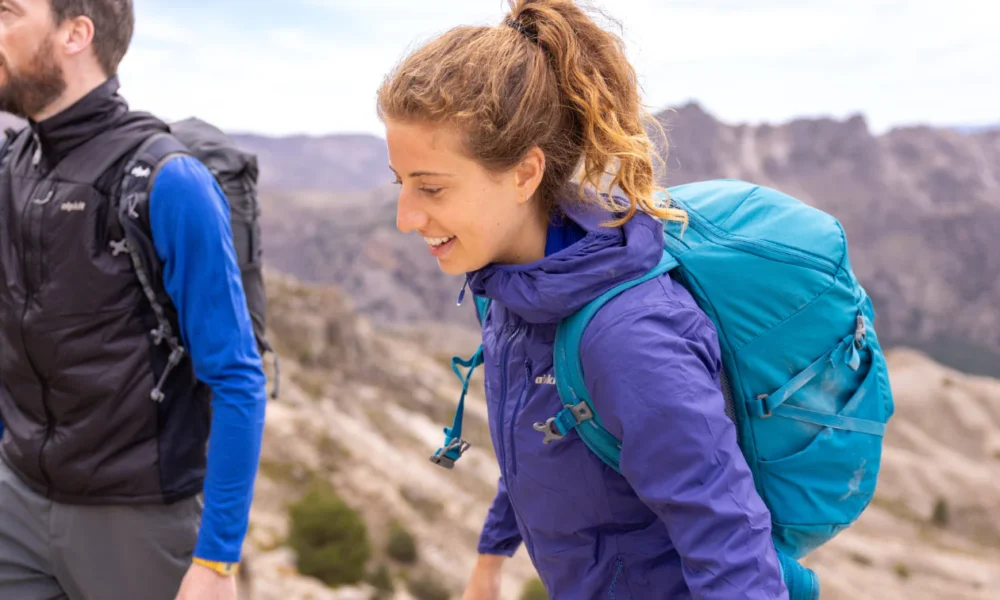Essential Gear Tips for Mountain Hikers and Backpackers

There’s a special kind of freedom in climbing mountains.
The world quiets down, your thoughts settle, and all that matters is what’s ahead of you — the trail, the view, and your breath. But here’s the honest truth: that peaceful moment on a summit doesn’t happen by luck. It happens because you were prepared. And when it comes to hiking, being prepared starts with the right gear.
You don’t have to be a seasoned mountaineer to enjoy high-altitude hikes. But whether you’re heading out for a weekend backpacking trip or tackling your first real summit, you’ll need more than just sturdy boots and good intentions.
This guide isn’t about overwhelming you with gear lists — it’s about giving you smart, field-tested tips so you can hike safer, smarter, and with more joy.
1. Know Your Terrain Before Packing
Before you throw anything into your backpack, study your route.
Are you doing a multi-day alpine trek, a steep one-day summit hike, or a trail with unpredictable weather changes?
Your gear needs will change depending on:
- Altitude: Higher altitudes mean colder temps and potential for snow, even in summer.
- Exposure: Are there tree cover or ridgelines? Will you be exposed to sun, wind, or storms?
- Water access: Will you need to carry all your water or just a filter?
Knowing this in advance helps you avoid overpacking or missing something essential.
Pro Tip: Check trail reports or forums a few days before your trip. Conditions change fast in the mountains.
2. Invest in Layering — It’s Smarter Than Just “Warm Clothes”
When you’re hiking, your body temperature fluctuates. You’ll heat up going uphill, chill quickly at rest stops, and possibly get drenched in a downpour. The solution? Layering.
Here’s a basic layering system:
- Base Layer: Moisture-wicking (avoid cotton). Merino wool or synthetic.
- Mid Layer: Insulation — think fleece or a light down jacket.
- Outer Layer: Waterproof and windproof shell. Breathable is better.
Even in summer, it’s smart to carry all three layers, especially if you’re hiking above 6,000 feet.
Avoid the mistake: Many beginners skip a waterproof shell. But even if the forecast is sunny, mountain weather is unpredictable. A surprise storm without a shell = soaked and freezing.
3. Your Backpack Should Fit You — Not Just Look Good**
Backpacks aren’t one-size-fits-all. A poorly fitting pack can cause shoulder pain, back strain, and blisters.
For day hikes, a 20–30L pack is usually enough. For overnight treks, go with 40–60L, depending on your setup.
What to look for in a good pack:
- Adjustable hip belt and shoulder straps
- Sternum strap for stability
- External loops or straps for poles or sleeping gear
- Hydration bladder compatibility or side bottle pockets
Before your trip: Load your pack and do a short hike with it fully weighted. This reveals pressure points and lets you adjust before hitting the big trails.
4. Footwear: The Most Important Decision You’ll Make
Your feet are your lifeline on a hike — treat them well.
Hiking shoes vs. boots vs. trail runners depends on terrain and personal preference.
| Type | Best For |
| Hiking Shoes | Moderate terrain, day hikes, mixed trails |
| Boots | Rugged, rocky, steep hikes, ankle support |
| Trail Runners | Fast, light hikers, less ankle support |
Break them in before your trip. Wear them on walks, around town, even grocery shopping. Blisters are the enemy — and they show up uninvited.
Also, don’t forget:
- Wool or synthetic socks (avoid cotton!)
- Blister tape or moleskin just in case
- Gaiters for muddy or snowy trails
5. Use a Trusted Hiking Gear Guide
Here’s where things get real — because when it comes to gear, it’s not about how much you have, but how well it works together.
A comprehensive hiking gear guide can help you figure out:
- What’s essential vs. what’s nice-to-have
- How to choose gear for specific terrains
- How to pack efficiently without sacrificing safety
We recommend checking out detailed gear guides like the one on TopHillSport, which offers practical advice tailored for both beginners and seasoned backpackers. It’s written by people who’ve done the trails and made the mistakes — so you don’t have to.
6. Hydration & Nutrition: Pack Like a Trail Athlete
You’ll be burning serious calories, especially on steep climbs or long hauls.
Even in cool temps, dehydration can sneak up on you — leading to dizziness, muscle cramps, and fatigue.
Minimum hydration tips:
- 2–3 liters of water per person per day
- Add electrolytes to one bottle (especially in heat)
- Use a hydration bladder for sipping while hiking
For food, skip the heavy stuff and aim for:
- Trail mix (high in fats and protein)
- Energy bars or nut butters
- Dried fruits or jerky
- Instant noodles, oats, or couscous for overnights
Pro Tip: Always carry an extra day’s worth of food. You never know when a trail might take longer than expected.
7. Safety Gear You Should Always Have
Even on short hikes, safety gear can make the difference between an inconvenience and a crisis.
Essentials:
- Navigation: Map, compass, GPS (download offline maps on Gaia or AllTrails)
- Headlamp: With extra batteries (sunsets come quickly in the mountains)
- First Aid Kit: Include blister care, tape, ibuprofen, allergy meds
- Multi-tool or knife
- Fire starter: Waterproof matches or lighter + cotton balls
- Emergency blanket or bivy sack
- Whistle and mirror (for signaling)
Many hikers skip these for “easy” trails — and that’s usually when they’re needed most.
8. Trekking Poles: Not Just for the Hardcore Crowd
If you’ve never used trekking poles, they might feel awkward at first — but once you hike steep or uneven terrain, you’ll understand the hype.
Why use poles:
- Reduce impact on knees (especially downhill)
- Improve stability on loose rocks or stream crossings
- Help with rhythm and balance during long climbs
Look for collapsible poles with adjustable height and comfortable grips. They’re lightweight, strap to your pack, and worth every ounce.
9. Bonus Tips for Comfort and Confidence on the Trail
Sometimes, small things make the biggest difference. Here are a few underrated essentials:
- Microfiber towel: Quick-drying and takes up no space
- Sunscreen & lip balm: UV rays are stronger at elevation
- Camp shoes: Let your feet breathe after the hike
- Dry bag or liner: Protects your gear if it rains
- Trash bag: Leave no trace — pack out everything
Being comfortable on the trail isn’t about luxury — it’s about reducing distractions so you can fully enjoy the journey.
Final Thought: Your Best Hike Is the One You’re Ready For
Every mountain, every forest, every high-altitude sunrise offers something new — but only if you’re ready to receive it. That doesn’t mean hauling the fanciest gadgets or overloading your pack with extras. It means knowing what you need to stay safe, warm, fueled, and focused.

Source: Essential Gear Tips for Mountain Hikers and Backpackers



